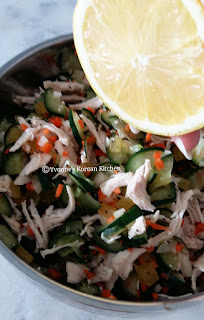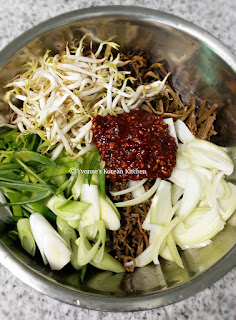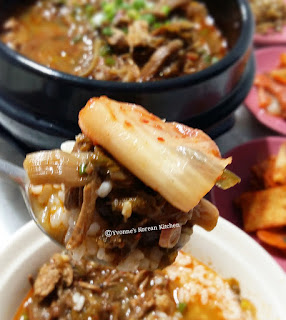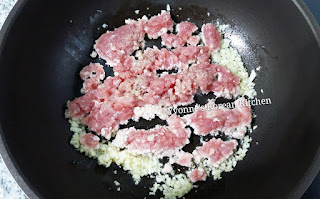Chicken Breast Salad with Danmuji (Korean radish pickle)
I saw this recipe in one of the Korean cooking TV programme - Homefood Rescue 2. They added danmuji in the salad which makes me wonder how would it taste and I am so eager to try it out as there are still some danmuji sit in my fridge after my last made gimbap ^^This recipe is definitely a keeper as I love the texture of the salad. The danmuji suits really well in the salad! The sourish, sweet and tangy taste from danmuji compliments the salad and the crunhy texture of it makes you munch on the salad non-stop...lol ;) Hope you all will like it as much as I do~
Serving: 2 person
Ingredients:
1 whole piece of Chicken Breast Meat
1 Japanese Cucumber (medium size)
1/4 cup chopped Carrot
1/4 cup chopped Onion
1/4 cup chopped Danmuji (Korean radish pickle)
2 hard boiled Egg (Optional)
1 tsp Salt
1 tbsp Vinegar
1/2 Lemon
Pinch of Black Pepper and Salt (To taste)
Step by step photos:
- Wash and cut cucumber into quarter and slice thinly. Place the cucumber in a bowl and add 1 tsp of salt. Slightly mix the cucumber with salt to marinate. Set aside for 20 minutes.
- Prepare a small pot, add in water and bring it to boil. Add in the chicken breast meat and boil for 10 - 15 minutes or until it is cooked.
- Take out the chicken breast meat once it's cooked and set aside to cool down.
- Drain the cucumber water (Try to taste the cucumber, if it's too salty, try to wash with some water and drain again).
- After drain the cucumber, squeeze out excessive water from the cucumber with hands (this step will help to get crunchy cucumber :).
- Mix all the veggies (carrot, cucumber, onion and danmuji) in a big bowl.
- Add in 1 tbsp of vinegar and toss to mix well.
- After the meat has cool down, tear it into thin strips, and add in the salad bowl. Add in the hard boiled egg too if you have.
- Sprinkle some salt and pepper to taste. Toss to mix well.
- Squeeze some lemon juice into the salad. Toss and ENJOY your salad!
Add some mayonaise and it will serve as a great yummy filing to sandwich! ^^























































